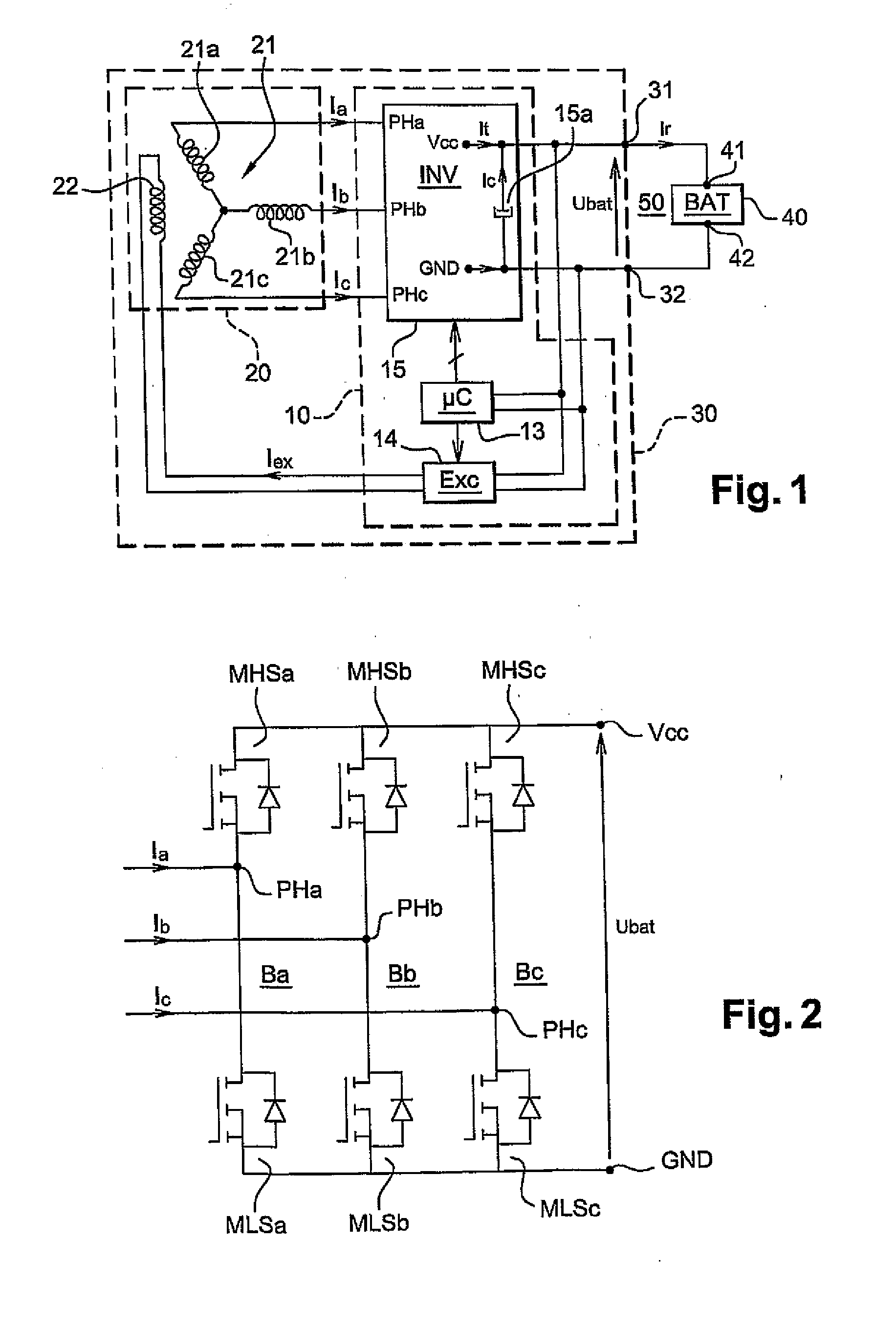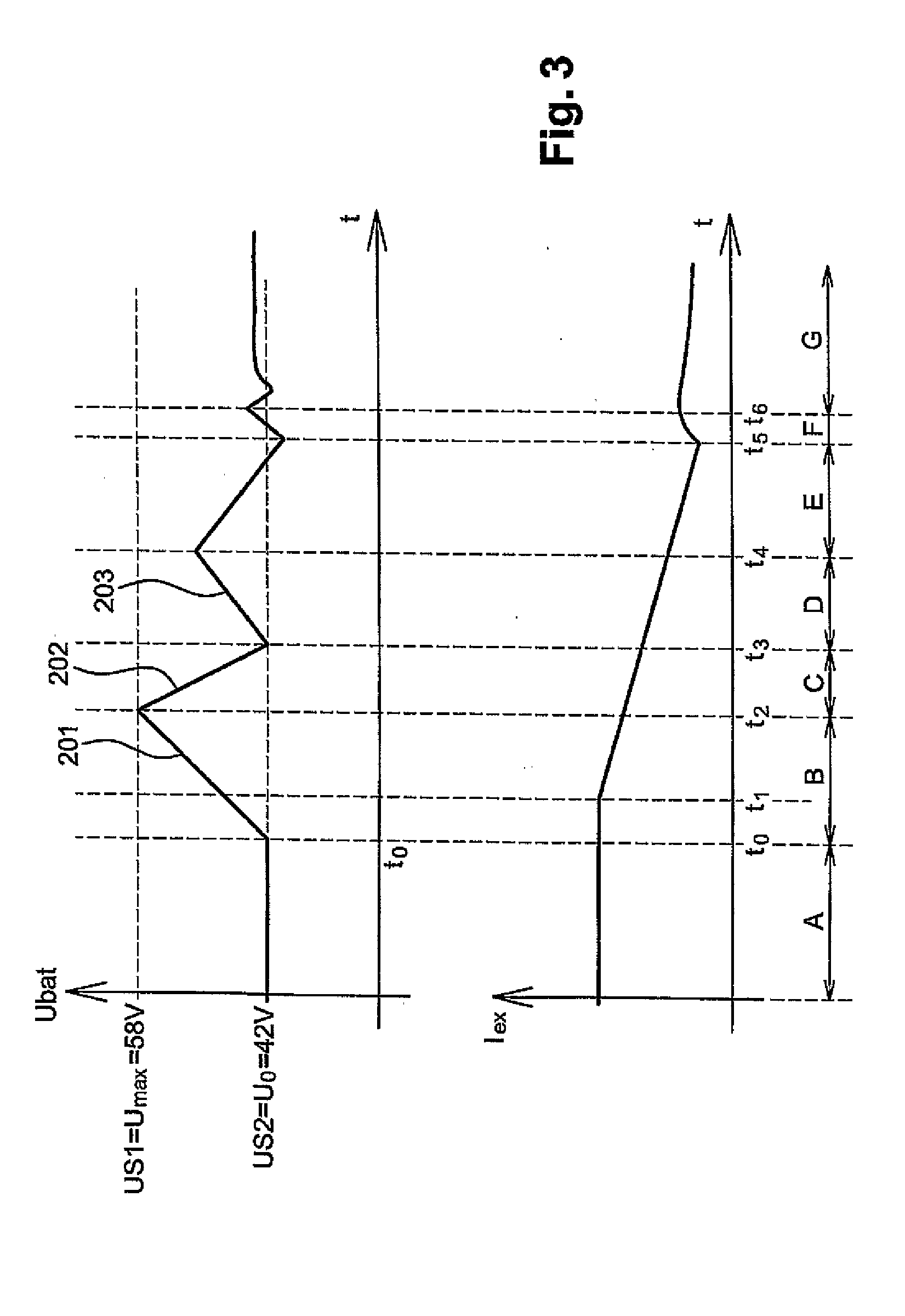Control And Power Module For A Rotating Electrical Machine
a technology of control and power module, which is applied in the direction of control system, electrical apparatus, field or armature current control, etc., can solve the problems of high overvoltage increased dc voltage of the on-board system, and drop in current consumption on the on-board system sid
- Summary
- Abstract
- Description
- Claims
- Application Information
AI Technical Summary
Benefits of technology
Problems solved by technology
Method used
Image
Examples
Embodiment Construction
[0049] The present invention will now be described in the context of its application to the control of a polyphase rotary electrical machine such as one of those mentioned in the introduction. Here the concern is only with the mode of functioning as an alternator of these machines. This mode is the only operating mode for an alternator. It is one of the possible operating modes for machines of other types. For the remainder of the description, the non-limiting example of an alternator / starter 30, a reversible machine, will be taken.
[0050] Moreover, for the remainder of the description, electrical equipment may be termed indifferently consumers or loads.
[0051] An alternator / starter 30 comprises three operating modes. An idle mode, an alternator mode, also referred to as generator mode, and a motor mode comprising a starting mode, known to persons skilled in the art.
[0052]FIG. 1 shows schematically an alternator / starter 30 according to the invention. The alternator / starter 30 is in...
PUM
 Login to View More
Login to View More Abstract
Description
Claims
Application Information
 Login to View More
Login to View More - R&D
- Intellectual Property
- Life Sciences
- Materials
- Tech Scout
- Unparalleled Data Quality
- Higher Quality Content
- 60% Fewer Hallucinations
Browse by: Latest US Patents, China's latest patents, Technical Efficacy Thesaurus, Application Domain, Technology Topic, Popular Technical Reports.
© 2025 PatSnap. All rights reserved.Legal|Privacy policy|Modern Slavery Act Transparency Statement|Sitemap|About US| Contact US: help@patsnap.com



